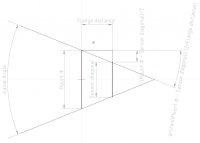The results of this metric seem very strange: Impossible to make some technically acceptable photos with Hasselblad or Pentax RB cameras. Maybe it's the result of humans dream of one number (e.g. 42) or GUTs in phyics (grand unified theories) which describe the whole world in one sentence.
I think it's correct for quality on a fixed sensor size but never for overall image quality because a larger sensor needs less lines per mm to shine in IQ if the result is printed in the same size.
I think the point is about "ease of design". Because the mount diameter of the large formats is smaller than the sensor, and the long flange, it would be more troublesome to design fast lenses. The F-stops of Hasselblad lenses are similar to consumer EF-S lenses... ;-)
Upvote
0

